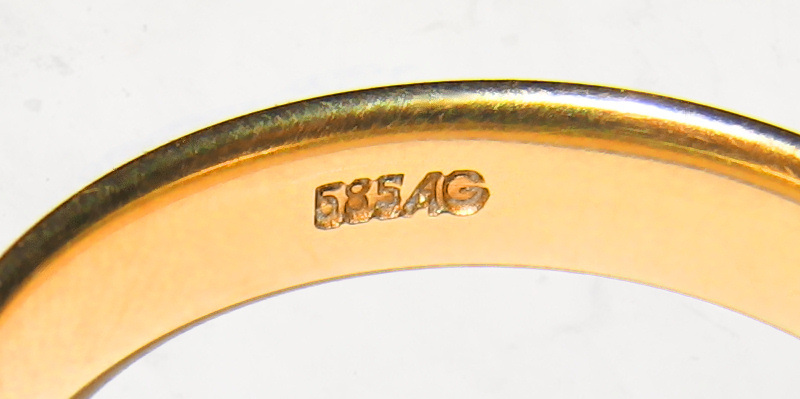The karat (abbreviation ct or kt) is a measure of the purity of gold alloys. In the United States and Canada, the spelling karat is used, while the spelling carat is used to refer to the measure of mass for gemstones. As a precious metal and gold buyer, respectively we buy gold scrap, jewellery, dental gold with a purity of 8KT and higher. For plated gold and gold alloys with a low gold content refer to our “Large Volume & Commercial Customer” section.
Measure
To convert the purity karat into percentage use the following simple formula: 100/24*X where X is the karat rating of the material.
Therefore 24-karat gold is fine (99.9% gold is accepted as 24KT although using the formula it should of course be 100%), 18-karat gold is 75% gold, 12-karat gold is 50% gold, and so forth.
Historically, in England the karat was divisible into four grains, and the grain was divisible into four quarts. For example, a gold alloy of 381/384th fineness (that is, 99.2% purity) could have been described as being 23-karat, 3-grain, 1-quart gold.
The karat system is increasingly being complemented or superseded by the millesimal fineness system in which the purity of precious metals is denoted by parts per thousand of pure metal in the alloy.
The most common karats used for gold in bullion, jewellery making and by goldsmiths are:
- 24 karat (millesimal fineness 999)
- 22 karat (millesimal fineness 916)
- 20 karat (millesimal fineness 833)
- 18 karat (millesimal fineness 750)
- 15 karat (millesimal fineness 625)
- 14 karat (millesimal fineness 585)
- 10 karat (millesimal fineness 417)
- 9 karat (millesimal fineness 375)
- 8 karat (millesimal fineness 333)
Derivation
The word karat is derived from the Greek kerátiōn (κεράτιων), “fruit of the carob”, via Arabic qīrāṭ (قيراط) and Italian carato. Carob seeds were used as weights on precision scales because of their reputation for having a uniform weight.(However, a 2006 study by Lindsay Turnbull and others found this to not be the case – carob seeds have as much variation in their weights as other seeds.) This was not the only reason. It is said that in order to keep regional buyers and sellers of gold honest, a potential customer could retrieve their own carob seeds on their way to the market, to check the tolerances of the seeds used by the merchant. If this precaution was not taken, the potential customer would be at the mercy of “2 sets of carob seeds”. One set of “heavier” carob seeds would be used when buying from a customer (making the seller’s gold appear to be less). Another, lighter set of carob seeds would be used when the merchant wanted to sell to a customer.
In the distant past, different countries each had their own carat, roughly equivalent to a carob seed. In the mid-16th century, the Karat was adopted as a measure of gold purity, roughly equivalent to the Roman siliqua 1/24th of a golden solidus of Constantine I). As a measure of diamond weight, from 1575, the Greek measure was the equivalent of the Roman siliqua, which was 1/24th of a golden solidus of Constantine; but was likely never used to measure the weight for gold.






